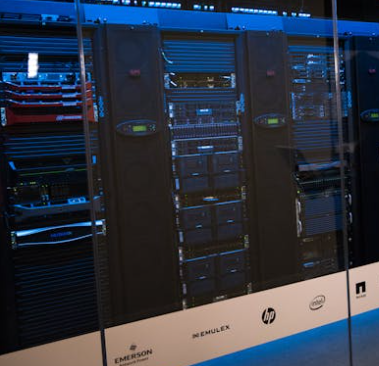
From smartphone assistants to large-scale enterprise systems, artificial intelligence (AI) and cloud computing are shaping the backbone of our digital lives. They power everything from social media feeds to autonomous vehicles, personalized recommendations to national security systems. But beneath the excitement and sweeping promises lies a pressing and often overlooked reality: these technologies run on enormous amounts of energy.
In an era where convenience is king and data is currency, the environmental and infrastructural costs of powering this new digital world are growing faster than public awareness. The sleek interfaces and seamless services obscure the humming servers, water-cooled racks, and energy-intensive training sessions happening in the background. The question is no longer whether these technologies can transform our world—but at what price.
The Hidden Infrastructure Behind Every Query
Every time you ask a virtual assistant a question, generate an AI image, or stream a Netflix episode stored in the cloud, you’re not just using your device. You’re triggering activity in vast data centers spread across the globe—warehouses filled with servers that require constant power and cooling to function.
Cloud computing may sound light and abstract, but its physical footprint is anything but. These centers rely on electricity not only to compute but to keep from overheating. Some are cooled with advanced liquid systems, others with massive HVAC setups, and many still rely on fossil fuel-based grids.
As AI models grow in size and complexity, the situation intensifies. Training a single large language model can consume as much energy as a car over its entire lifetime. One study from the University of Massachusetts Amherst estimated that training a single AI model could emit over 626,000 pounds of carbon dioxide—roughly five times the lifetime emissions of an average American car.
And that’s just the training phase. After deployment, inference—the process of responding to user queries—happens millions of times a day. It’s like lighting up a stadium every time someone asks for a recommendation.

Why AI Is So Power-Hungry
The energy demands of AI are tied directly to the scale of the models and the infrastructure needed to support them.
Modern AI models are trained on massive datasets using powerful clusters of graphics processing units (GPUs). The more data, the longer the training time. And the bigger the model, the more power it needs—not only to be trained but to operate in real-time scenarios.
This arms race for bigger and better AI has led to a surge in energy use. A few years ago, training an image recognition model might take a few GPUs running for a week. Now, training a cutting-edge language model like GPT or a multimodal system involves thousands of specialized chips running for weeks or even months.
At the same time, the demands on cloud infrastructure have never been higher. Every company wants to be AI-driven, cloud-native, always online. This has created a feedback loop where more compute requires more power, which in turn requires more data centers, which themselves demand more energy.
Data Centers: The New Factories
Data centers are now estimated to use between 1% and 3% of global electricity—more than many countries. As demand grows, so does the number of centers and their size. Hyperscale facilities, which span hundreds of thousands of square feet, are being built in deserts, tundras, and industrial parks, often located near cheap energy sources and access to water for cooling.
While some of these facilities aim to run on cleaner energy, the global picture is mixed. Many still rely on coal or natural gas, especially in regions where grid power is not yet green. And even where renewables are available, the scale of power needed often outpaces what’s cleanly available.
Some companies have pledged to reach net-zero emissions or use renewable energy credits, but critics argue these measures often amount to accounting tricks rather than real reductions.
Water use is another hidden toll. Keeping data centers cool, especially in hot climates, can consume millions of gallons of water annually. In drought-prone areas, this has sparked backlash from local communities who are being asked to conserve while tech giants expand.
The Cost of Convenience
As users, we’ve become conditioned to expect everything instantly: answers, media, products, solutions. And most of it is powered by these invisible engines. But the convenience comes at a real cost—one we rarely see on a screen.
Voice assistants listening 24/7, AI-enhanced image generation tools, predictive analytics, and personalized feeds all rely on continuous processing. Each swipe, each search, each prompt is a small energy event. Multiplied by billions of people and devices, it adds up fast.
This raises uncomfortable questions: How many of our digital interactions are essential? How much of our data needs to be stored forever? Could smarter design—not just smarter tech—reduce demand?
Rethinking Growth
There’s no denying the value that AI and cloud computing can bring—from medical breakthroughs to smarter infrastructure. But we’re entering a stage where their impact must be measured not just in terms of utility, but in terms of sustainability, equity, and necessity.
Efficiency has improved in some areas. New chips consume less energy per operation. Software is being optimized for better use of resources. But efficiency gains are often wiped out by the sheer increase in volume and ambition. In other words, we’re running faster on the treadmill.
What’s needed is a more honest assessment of priorities. Does every app need a machine learning algorithm? Does every customer service bot need to be a full language model? Does every tech solution need to scale at all costs?
We’re still in the early stages of asking these questions.
Regulation and Responsibility
Governments are beginning to catch up. The EU has started scrutinizing the carbon footprint of AI systems under broader digital regulation efforts. Cities in the U.S. have put moratoriums on new data centers until their environmental impact is better understood. Some countries now require transparency around energy usage for large tech operations.
But much of the responsibility still falls on the private sector, and in particular, on the major players who dominate cloud infrastructure and AI development. Transparency around energy use, clearer reporting, and a shift from abstract pledges to material change are all urgently needed.
The future shouldn’t just be intelligent. It should also be responsible.
The Road Ahead
AI and cloud computing are not going away. They’ll likely become more central to our lives, economies, and even governments. But their ascent shouldn’t be unchecked.
The digital world isn’t weightless. It has a footprint. It leaves traces in the form of heat, emissions, and extracted resources. As we continue to build a future shaped by these tools, we owe it to ourselves—and to the planet—to do so with care.
Not every advance needs to come with an ecological price tag. But it takes intention to ensure that. And perhaps it starts by asking not what AI can do, but what it should do.






